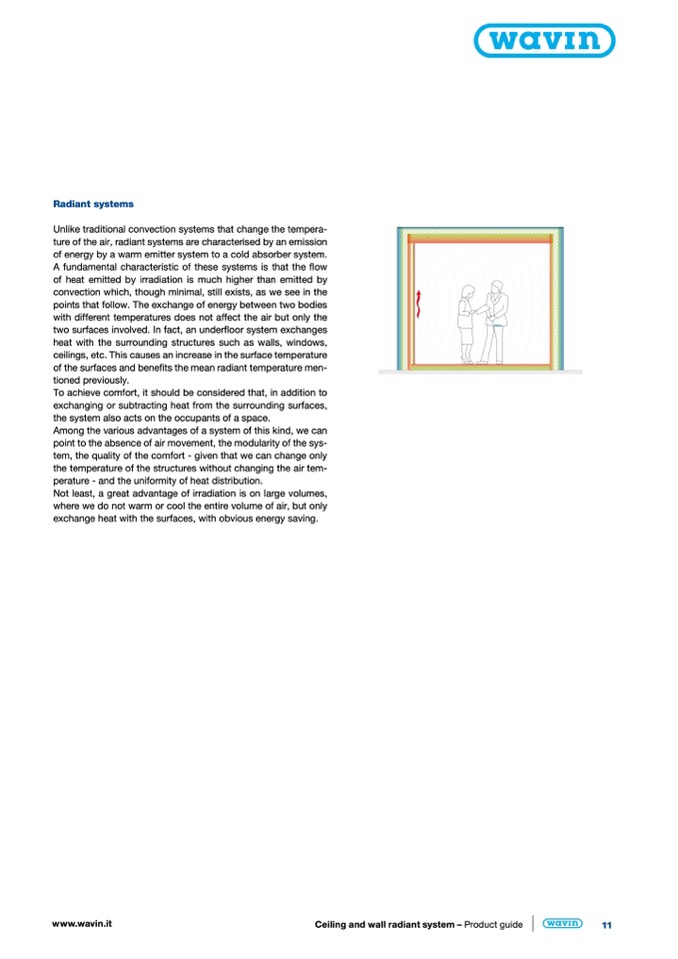
Radiant systems
Unlike traditional convection systems that change the tempera-
ture of the air, radiant systems are characterised by an emission
of energy by a warm emitter system to a cold absorber system.
A fundamental characteristic of these systems is that the flow
of heat emitted by irradiation is much higher than emitted by
convection which, though minimal, still exists, as we see in the
points that follow. The exchange of energy between two bodies
with different temperatures does not affect the air but only the
two surfaces involved. In fact, an under
floor system exchanges
heat with the surrounding structures such as walls, windows,
ceilings, etc. This causes an increase in the surface temperature
of the surfaces and benefits the mean radiant temperature men-
tioned previously.
To achieve comfort, it should be considered that, in addition to
exchanging or subtracting heat from the surrounding surfaces,
the system also acts on the occupants of a space.
Among the various advantages of a system of this kind, we can
point to the absence of air movement, the modularity of the sys-
tem, the quality of the comfort - given that we can change only
the temperature of the structures without changing the air tem-
perature - and the uniformity of heat distribution.
Not least, a great advantage of irradiation is on large volumes,
where we do not warm or cool the entire volume of air, but only
exchange heat with the surfaces, with obvious energy saving.
www.wavin.it
Ceiling and wall radiant system – Product guide
11


